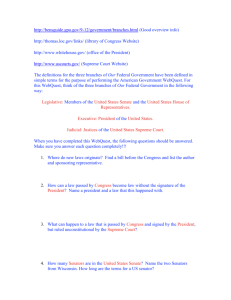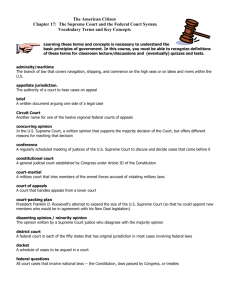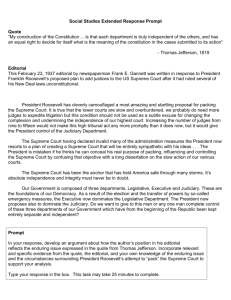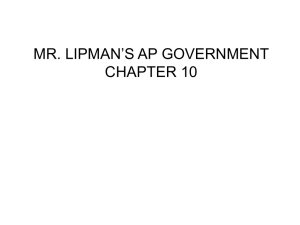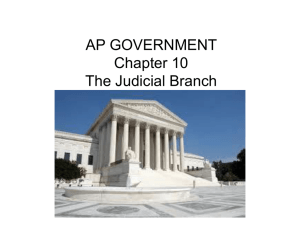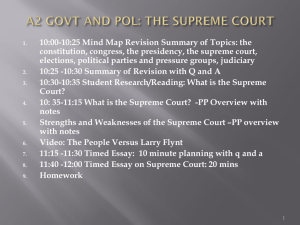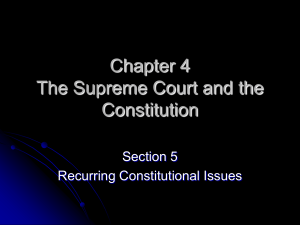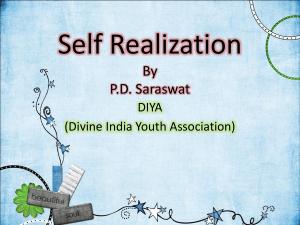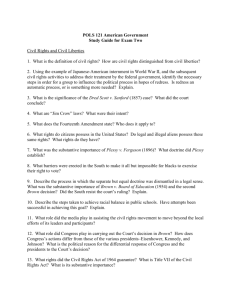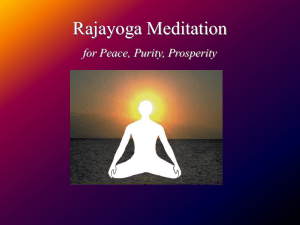How the Supreme Court Shapes Public Policy
advertisement
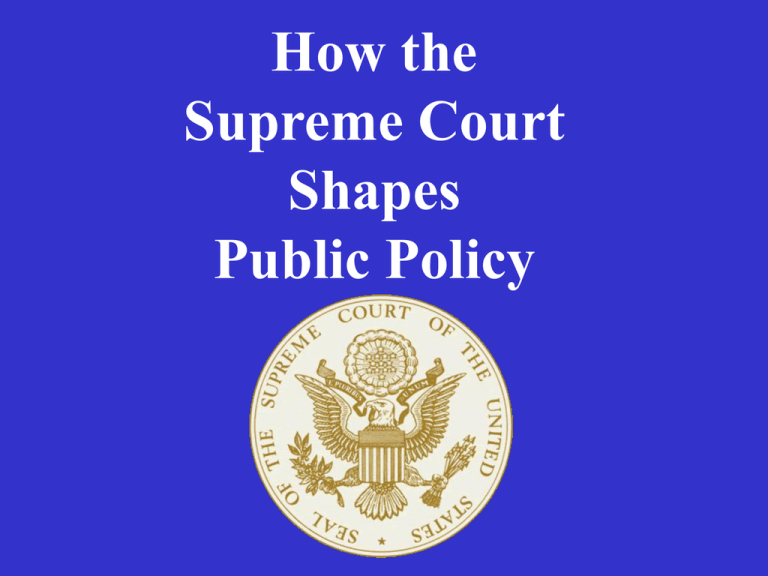
How the Supreme Court Shapes Public Policy How Is Policy Made In U.S.? The Supreme Court – Uses judicial review to determine constitutionality – Interprets the meaning of laws – Overrules or reverses its previous decisions Interpretation of Laws Congress often uses very general language in writing laws. This leaves it up to the President or Supreme Court to apply the law to a specific situation. Interpretation of Laws Americans with Disabilities Act of 1990 (Using general language, this law prohibits discrimination on the basis of disability in places of public accommodation) Therefore, the PGA has to provide accommodations for disabled spectators. But does the PGA have to provide accommodations for disabled players? Interpretation of Laws Court ruled PGA must accommodate Casey Martin by allowing him to ride in a golf cart during the tournament. This ruling could affect players in many different kinds of sports. Interpretation of Laws In the end, the Supreme Court decides what Congress meant when it passed a law. The impact of the Supreme Court’s rulings are felt across the nation. Overturning Earlier Decisions Once the Supreme Court rules on a case, the decision becomes a precedent on which to base other decisions. This makes the law predictable. Overturning Earlier Decisions • Justices are appointed for life but not forever. • As justices die or retire, new justices may have a different opinion on an issue. • Times change and the Court may shift its position over time. End Here Judicial Review The power to examine the laws and actions of local, state and national governments and to cancel them if they violate the Constitution. Marbury v. Madison 1803 How Is Policy Made In U.S.? • Congress – Passes laws – Passes appropriations bills • President – Carries out laws – Draws up national budget Interpretation of Laws Civil Rights Act of 1964 (Prohibited discrimination based on race, color, or national origin.) Supreme Court required schools to provide special instruction in English to immigrant students and this became the basis for classes taught in Spanish. Limits on Types of Cases The Supreme Court will only hear cases that meet certain criteria: – The decision must make a difference. – The person or group bringing the case must have suffered real harm. – The case must involve a substantial question. – The Court refuses to deal with political questions. Limited Control Over Agenda Always remember: The Supreme Court cannot create the cases. It can only react to cases brought before the Court. The Supreme Court has no enforcement power. Judicial Review Throughout U.S. history, the Supreme Court has only ruled about 200 federal laws unconstitutional. But each of these 200 cases had a major impact on public policy. Judicial Review The Supreme Court has ruled over 1000 state and local laws to be unconstitutional. This power to review state and local laws has been felt most strongly in the area of civil rights. Brown vs. Board of Education of Topeka (1954) Miranda vs. Arizona (1966)
